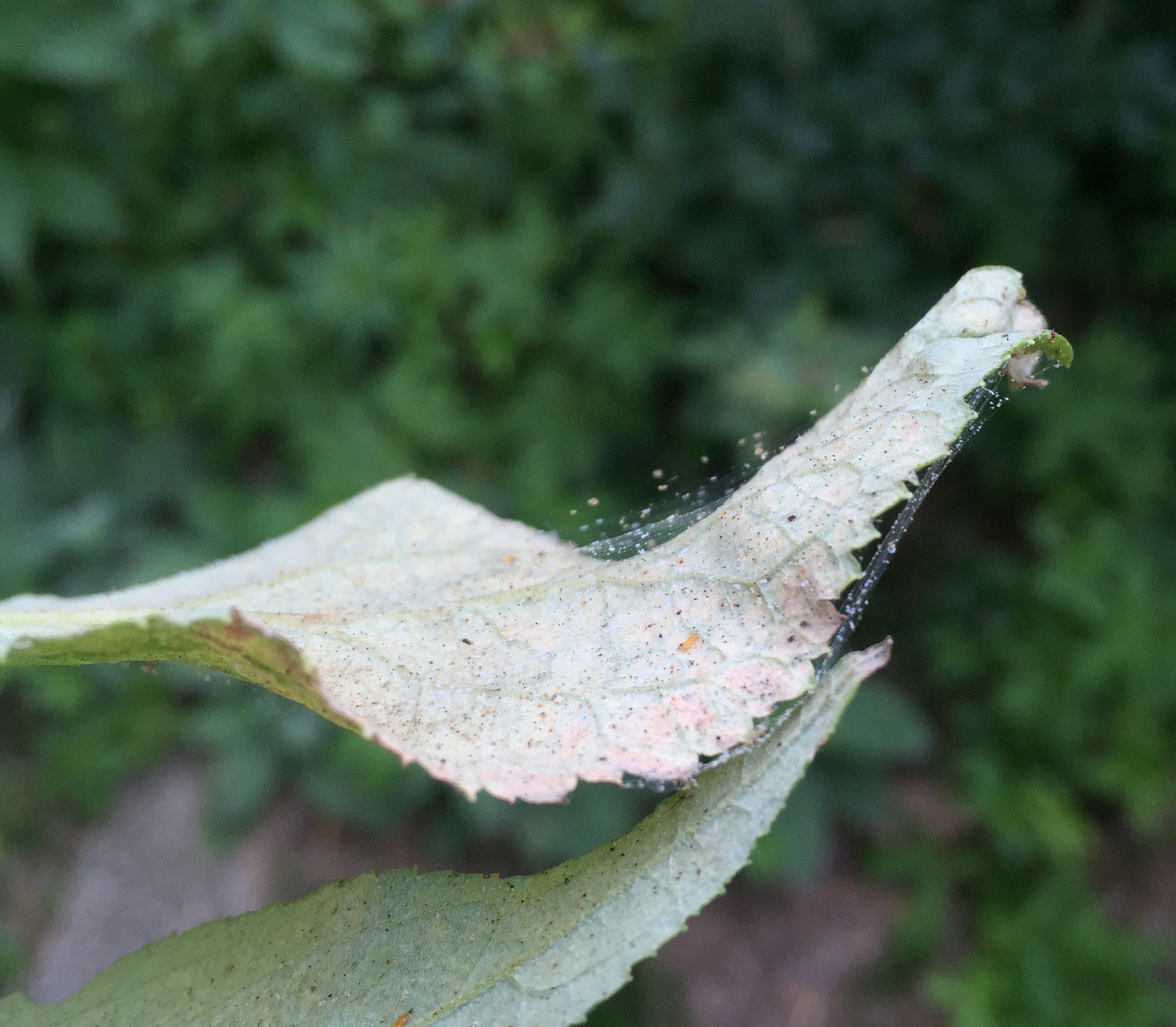Scout for Twospotted Spider Mites
go.ncsu.edu/readext?693958
en Español / em Português
El inglés es el idioma de control de esta página. En la medida en que haya algún conflicto entre la traducción al inglés y la traducción, el inglés prevalece.
Al hacer clic en el enlace de traducción se activa un servicio de traducción gratuito para convertir la página al español. Al igual que con cualquier traducción por Internet, la conversión no es sensible al contexto y puede que no traduzca el texto en su significado original. NC State Extension no garantiza la exactitud del texto traducido. Por favor, tenga en cuenta que algunas aplicaciones y/o servicios pueden no funcionar como se espera cuando se traducen.
Português
Inglês é o idioma de controle desta página. Na medida que haja algum conflito entre o texto original em Inglês e a tradução, o Inglês prevalece.
Ao clicar no link de tradução, um serviço gratuito de tradução será ativado para converter a página para o Português. Como em qualquer tradução pela internet, a conversão não é sensivel ao contexto e pode não ocorrer a tradução para o significado orginal. O serviço de Extensão da Carolina do Norte (NC State Extension) não garante a exatidão do texto traduzido. Por favor, observe que algumas funções ou serviços podem não funcionar como esperado após a tradução.
English
English is the controlling language of this page. To the extent there is any conflict between the English text and the translation, English controls.
Clicking on the translation link activates a free translation service to convert the page to Spanish. As with any Internet translation, the conversion is not context-sensitive and may not translate the text to its original meaning. NC State Extension does not guarantee the accuracy of the translated text. Please note that some applications and/or services may not function as expected when translated.
Collapse ▲Twospotted spider mites are probably the most common spider mite species to damage ornamental plants, fruits, vegetables, and others. Twospotted spider mites are widely distributed in the United States and feed on over 180 plant species. Twospotted spider mites pierce host plant leaves with their sharp, slender mouthparts. When they extract the sap a chlorotic spot appears. High mite populations cause leaves to become bronze or gray as these chlorotic spots, called stippling, accumulate. Plants will drop damaged leaves and may die. Mites also spin silk webs that can cover leaf surfaces and accumulated feces, exoskeletons, and other debris.
Twospotted spider mites are common on roses, daylilies, hollyhock, marigold, butterfly bush, Solomon’s seal, and many other annuals, perennials, and shrubs. Twospotted spider mites are most active in hot dry weather which I imagine will be here any day now. Area Specialized Agent Danny Lauderdale suggested nurseries begin monitoring susceptible plants soon as the weather warms. Landscape plants are also susceptible and should be monitored. Look on the undersides of leaves for webbing, eggs, shed skins, and mites. An efficient way to monitor is to beat plant foliage on a paper plate or other white surface. Mite will be easily distinguished from dirt and other debris because they will be moving. Check plants weekly as populations can outbreak very quickly. Throughout the season look for stippling damage on leaves and focus scouting on plants that have been damaged in previous years.
The best management option for spider mites is to plant less susceptible plant species in areas that are hot, dusty, or stressful. Nitrogen fertilizer can induce mite outbreaks by making plants more nutritious to feed on.
Spider mites have many predators that often keep them under control. These include predatory mites, minute pirate bugs (Orius spp.), lacewing larvae, lady beetles, and others. Disrupting natural enemies with insecticides, such as mosquito fogging, often causes spider mite outbreaks. Imidacloprid and other neonicotinoids can also lead to spider mite outbreaks.
In many cases mite populations can be reduced with insecticide soap or horticultural oil. Thorough application of pesticides to the underside of the plant foliage is essential for good control. Most insecticides do not kill spider mites because mites are not insects. There are many miticides available that target specific aspects of mite physiology. These products are also safer for beneficial insects than broad spectrum insecticides. Consider miticides from the Southeastern US Pest Control Guide for Nursery Crops and Landscape Plantings.




